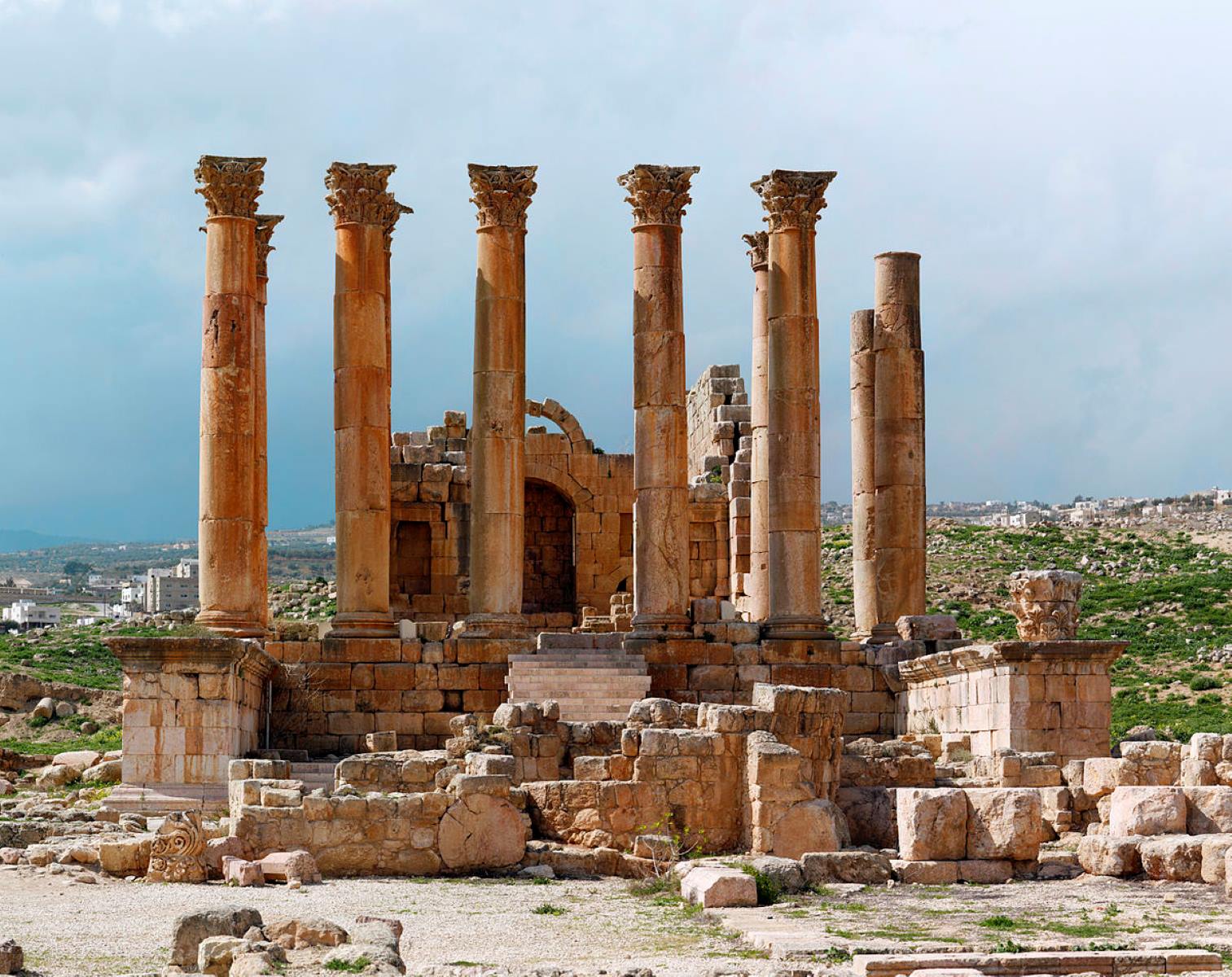
The Temple of Artemis, also known as the Temple of Diana, was one of the most remarkable architectural wonders of the ancient world. Located in the ancient city of Ephesus in present-day Turkey, this magnificent temple dedicated to the Greek goddess Artemis stood as a testament to human ingenuity and artistic achievements.
Despite its unfortunate destruction and multiple rebuilds throughout history, the Temple of Artemis remains a source of fascination and intrigue for archaeologists, historians, and travelers alike. This article aims to uncover 17 surprising facts about the Temple of Artemis, shedding light on its grandeur, historical significance, and the mysteries that still surround its existence.
Key Takeaways:
- The Temple of Artemis was a massive and beautiful ancient wonder, attracting visitors from all over the world and influencing future architectural designs.
- Despite facing destruction multiple times, the Temple of Artemis left a lasting impact on history, inspiring art, literature, and architectural endeavors.
The Temple of Artemis was one of the Seven Wonders of the Ancient World.
The Temple of Artemis was regarded as one of the Seven Wonders of the Ancient World. Its grandeur and beauty captivated visitors from all corners of the earth, making it a must-see destination.
This architectural marvel was located in Ephesus, an ancient city in present-day Turkey.
The Temple of Artemis was situated in Ephesus, a bustling city known for its rich history and culture. This strategic location ensured that the temple received a constant stream of pilgrims and admirers.
It was built around 550 BCE and took over 120 years to complete.
The construction of the Temple of Artemis began in 550 BCE and continued for over a century. Skilled architects and craftsmen were employed to create this masterpiece of ancient architecture.
The temple stood approximately 13 times larger than the Parthenon in Athens.
Impressively, the Temple of Artemis occupied an area that was 13 times larger than the renowned Parthenon in Athens. This immense size showcased the temple’s significance and magnificence.
The Temple of Artemis was adorned with intricate and elaborate sculptures.
The temple was adorned with beautifully sculpted reliefs and statues. These exquisite works of art served to honor Artemis and added to the temple’s grandeur.
It was constructed using marble and featured 127 columns.
The temple was primarily constructed using gleaming marble, which added to its visual splendor. It boasted an impressive 127 columns, each standing tall and proud.
Unfortunately, the Temple of Artemis was destroyed and rebuilt multiple times.
Throughout its existence, the Temple of Artemis faced destruction on multiple occasions. Rebuilt each time, it demonstrated the unwavering belief and dedication of the people towards the goddess Artemis.
A madman named Herostratus was responsible for one of the temple’s acts of destruction.
In an act of infamy, a man named Herostratus set fire to the temple in 356 BCE, seeking eternal fame. His name was forever condemned, as it is believed that he sparked the decree that prohibited mentioning his name under penalty of death.
The temple served as a treasury for valuable offerings.
Many wealthy individuals and city-states made offerings of great value to the temple. This treasure trove included gold, silver, precious gems, and other valuable artifacts.
It was a renowned center for worship and religious ceremonies.
The temple was a famous pilgrimage site, attracting devotees from all over the ancient world. It was a place of spiritual solace and served as a venue for important religious ceremonies.
The Temple of Artemis featured innovative architectural elements.
This architectural marvel boasted innovative features such as the use of intricate moldings and decorative friezes. These elements added to the temple’s exquisite appearance.
The temple’s fame spread far and wide, attracting visitors from distant lands.
The reputation of the Temple of Artemis extended far beyond Greece. Its magnificence and religious significance drew people from distant lands who marveled at its splendor.
Alexander the Great paid for the temple’s reconstruction.
After the temple was destroyed by fire, Alexander the Great offered to fund its reconstruction. His generosity showcased the significance and reverence attached to this ancient wonder.
The temple’s final destruction occurred in 401 CE.
Despite its resilient nature, the temple met its final destruction in 401 CE. Its remnants were scattered and repurposed over time, leaving behind a legacy of awe-inspiring stories and fascinating history.
The Temple of Artemis influenced subsequent architectural endeavors.
This magnificent temple left a lasting impact on the architectural world. Its design and structural elements influenced many subsequent temples and buildings.
Excavations have uncovered various artifacts from the temple.
Archaeological excavations around the temple site have unearthed a wealth of artifacts, including intricate sculptures, architectural fragments, and offerings left by pilgrims.
The Temple of Artemis inspired countless works of art and literature.
Artists, poets, and writers drew inspiration from the Temple of Artemis, creating countless works that celebrated its magnificence and mythological significance.
Conclusion
The Temple of Artemis is one of the most fascinating and enigmatic landmarks in history. Its impressive size, intricate architecture, and rich cultural significance make it a must-visit destination for history buffs and travelers alike. From its humble beginnings as a simple shrine to the grand temple that stood as one of the Seven Wonders of the Ancient World, the Temple of Artemis continues to captivate our imagination. Whether you’re interested in ancient mythology, architectural marvels, or simply love exploring historical sites, a visit to the Temple of Artemis is sure to leave you in awe of the incredible achievements of our ancestors.
FAQs
1. What is the Temple of Artemis?
The Temple of Artemis was an ancient Greek temple dedicated to the goddess Artemis. It was located in Ephesus, a city in what is now modern-day Turkey.
2. When was the Temple of Artemis built?
The initial construction of the temple dates back to the 6th century BC, but it underwent several reconstructions and expansions over the years.
3. Why is the Temple of Artemis significant?
The Temple of Artemis was considered one of the Seven Wonders of the Ancient World and was a sacred site dedicated to the Greek goddess Artemis, the goddess of hunting, wilderness, and fertility.
4. What happened to the Temple of Artemis?
The temple was destroyed multiple times throughout history, whether by fire or through acts of war. The final destruction occurred in 401 AD, and today only ruins remain.
5. Can you visit the Temple of Artemis?
Yes, visitors can explore the ruins of the Temple of Artemis in Ephesus, Turkey. Although only a few columns and fragments remain, it is still an impressive sight and holds immense historical importance.
6. Are there any interesting facts about the Temple of Artemis?
Yes, there are several surprising facts about the Temple of Artemis, such as its massive size, its role as a major pilgrimage site, and the legend of the Amazons being closely associated with its construction.
7. Is the Temple of Artemis a UNESCO World Heritage site?
No, the Temple of Artemis is not currently listed as a UNESCO World Heritage site. However, the ruins of Ephesus, including the remnants of the temple, are recognized by UNESCO.
Thirst for more captivating facts about the Temple of Artemis? Quench that curiosity with our article showcasing 20 fun tidbits about this ancient wonder. History buffs will also appreciate our comprehensive list of events that occurred on July 21st throughout the ages. Art enthusiasts, don't miss our intriguing exploration of the Artemis Statue and its fascinating details. Continue your journey of discovery with these engaging reads that promise to enlighten and entertain.
Was this page helpful?
Our commitment to delivering trustworthy and engaging content is at the heart of what we do. Each fact on our site is contributed by real users like you, bringing a wealth of diverse insights and information. To ensure the highest standards of accuracy and reliability, our dedicated editors meticulously review each submission. This process guarantees that the facts we share are not only fascinating but also credible. Trust in our commitment to quality and authenticity as you explore and learn with us.


